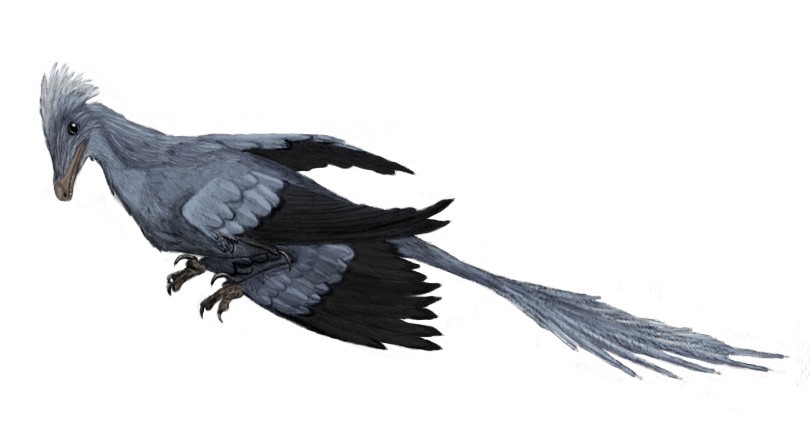The discovery, reported in the journal Paleontology, strengthens evidence that many dinosaurs and prehistoric birds were dazzling to look at and likely evolved flashy ornaments such as iridescent feathers to capture the attention of the opposite sex. The feathers possibly also served as camouflage, or helped in alarming potential predators or prey.
"A conservative estimate of what they would have looked like would be a primary black color with a glossy, iridescent sheen, much like what has been suggested for the non-avian dinosaur Microraptor," Jennifer Peteya of the University of Akron's Department of Biology and Integrated Bioscience Program told Seeker.
 |
| Illustration of the small dinosaur Microraptor zhaoianus. |
Peteya and her team determined that the fossil belonged to an early enantiornithine bird, referring to a group of now-extinct birds that lived alongside dinosaurs and almost always had teeth and clawed "fingers" on their wings.
Both microscopic and chemical evidence suggest the iridescence. The bird's melanosomes, which are cellular structures that produce the color pigment melanin, were very long and thin and were arranged in a sheet-like end-to-end orientation.
These characteristics are associated with iridescent feathers in living birds, so the researchers believe that the ancient bird's feathers featured luminous colors when viewed from different directions. The orientation of the melanosomes wasn't quite as strong as it is for modern birds like peacocks and hummingbirds, so the effect would have been a bit subtler, the scientists suspect.
 |
| Purple-throated Carib hummingbird feeding at Morne Diablotins National Park, Dominica. |
"In many species of modern birds, mate choice is determined by flashy feathers and ornaments such as these," Peteya said. "Males, for example, with longer ornamental feathers or flashier feathers are more likely to attract a female than duller males."
Iridescence often evolves later in a bird's life, tied to sexual maturity. In this case, however, the flashy features seem to have emerged when the bird was still relatively young. Perhaps these birds were very fast living, mating early in life, or safety took a back seat to attractiveness, since the iridescence could have grabbed the attention of predators as well as mates.
Read more at Discovery News

No comments:
Post a Comment